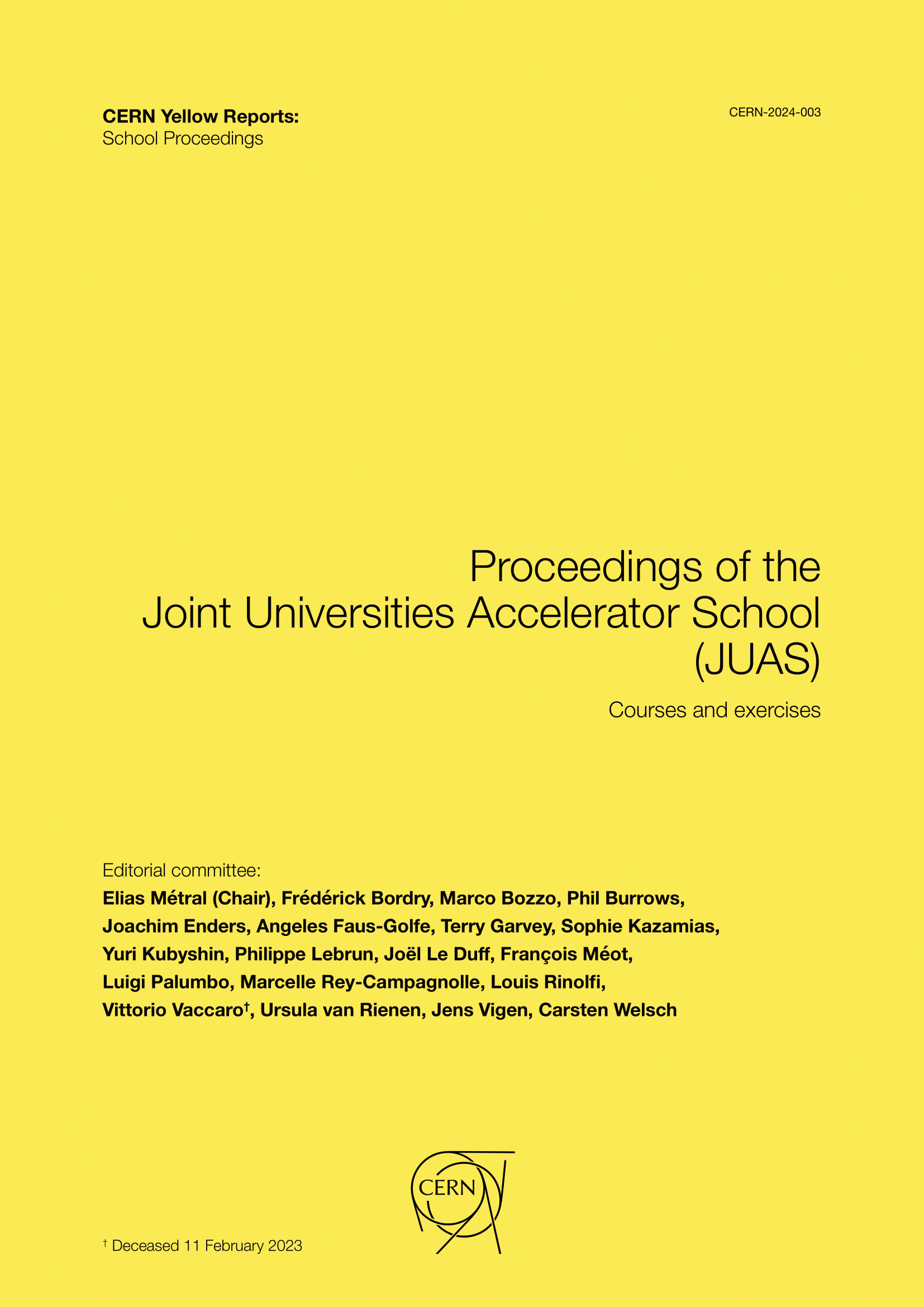I.13 — Cyclotrons and fixed field alternating gradient accelerators
DOI:
https://doi.org/10.23730/CYRSP-2024-003.605Abstract
The cyclotrons are the most used hadron accelerators: they represent a compact and efficient solution with 100% duty cycle, very well adapted for the medical applications and for the nuclear physics research. The cyclotron maximal energy is typically 1 GeV for a proton beam. In this introductory lecture, we present the underlying concepts. The longitudinal and transverse beam dynamics in these accelerators are covered. We present specific cyclotrons (compact cyclotrons at low energy, synchrocyclotrons, “Fixed Field Alternating Gradient” accelerators, superconducting cyclotrons, separated sector cyclotrons). The concepts used in the cyclotrons are numerous, and the topic is an ideal application of many ideas introduced in a basic course in accelerator physics. We provide many exercises for a better understanding.
Downloads
Published
Issue
Section
License

This work is licensed under a Creative Commons Attribution 4.0 International License.
Authors who publish with this publication agree to the following terms:
- CERN retains copyright and publishes the work licensed under the Creative Commons Attribution License 4.0 that allows others to share the work with an acknowledgement of the work's authorship and initial publication in this series.
- Authors are able to enter into separate, additional contractual arrangements for distribution of the published version of the work (e.g., post it to an institutional repository or publish it in a book), with an acknowledgement of its initial publication in this series.
- Authors are permitted and encouraged to post their work online (e.g., in institutional repositories or on their website) prior to and during the submission process, as it can lead to productive exchanges, as well as earlier and greater citation of published work (See The Effect of Open Access).

